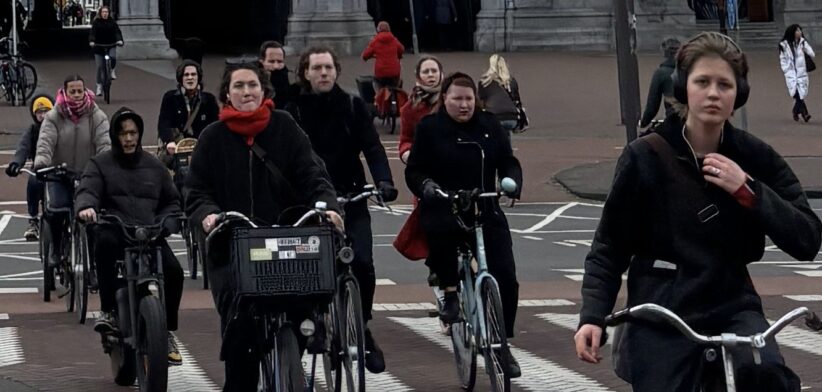By Shane Rodgers
Many years ago, when I lived in Canberra, my bicycle was my second car.
My eldest daughter had a seat on the back, and I had a basket on the front for groceries.
We could ride pretty much anywhere in the city on nice, wide bike tracks that barely intersected with the danger posed by cars. It was healthy, clean and fun.
Sadly, nowhere else I have lived has had similar bike highways. There are bike tracks but to get to them you generally need to tangle with errant utes on the road, or risk barrelling into elderly pedestrians on the footpath.
This creates something of a cold war between bikers, drivers and pedestrians that sometimes builds to ugly rage, terrible accidents and even death. When relatives from Germany were visiting a few years ago, they were horrified at the dangerous interplays happening between cars, bikes and pedestrians in Brisbane.
With that in the back of my mind, it was interesting to visit Europe earlier this year and witness some genuine bike cities – particularly Amsterdam and Copenhagen.
The old city areas of Amsterdam are dominated by bikes, which are clearly the ascendant form of transport in the travel hierarchy.
The city famously has more bikes than people (around 880,000 bicycles compared to 820,000 residents). Our canal tour guide said there were around 100,000 bikes at any time outside the main railway stations.
Bikes also were front and centre of crime, with about 10,000 stolen a year, and it is generally accepted that plenty of those are sitting at the bottom of canals.
The whole bike-world thing tends to conjure visions of a serene city of rolling wheels and slow meandering movement with the wind in your hair and the smell of baking biscuits in your nostrils.
The reality is, many of the cyclists seem happy to run you down if you get in the way.
They ride fast and you have to constantly look in 50 directions every second on the road and footpath to avoid a collision.
It is kinda workable, but it takes a while to develop your bike lateral vision to avoid every step being laced with stress.
The locals insist the tourists are the problem (the British get blamed for a lot in Amsterdam). They are accused of visiting and hiring bikes without knowing how to ride in the city safely.
Amsterdamians, the story goes, grow up in bike world and instinctively know how to ride and walk among bicycles.
Whatever the reality of any underlying agro, one of the interesting things about bikes and bike cities is the research showing the bikeability of a city is strongly linked to the happiness of its citizens.
This shows up consistently in different research, including the various happiness indexes.
According to Google’s AI generated summary of the issue (which must be right because it was written by a machine) bike-friendly cities are not only easy and safe for cycling, they also create an environment that has a positive impact on health, social interaction, and overall well-being.
This view is backed up by large surveys conducted in the US and the UK. Countries like the Netherlands and Denmark, with very high daily bike use, are also always high in the rankings of the annual Global Happiness Report.
It is well documented that having good bike tracks helps attract talent to cities with lots of business start-up and tech industries.
I think the upshot of all this is the need to really treat bicycles as a desirable form of transport that contribute positively to the liveability and wellbeing of a city. And the city transport infrastructure needs to reflect that.
Frankly, nothing I have seen overseas has been any better than the Canberra experience where the separation between bikes and cars felt right, and genuinely safe.
The bicycle is a simple invention. Yet it may well hold the key to creating cities that work and help deal with chronic issues like obesity and climate change in a very simple way.
Shane Rodgers is the author of Worknado – Reimagining the way you work to live. He now seldom rides a bicycle and, when he does, he refuses to wear lycra.










